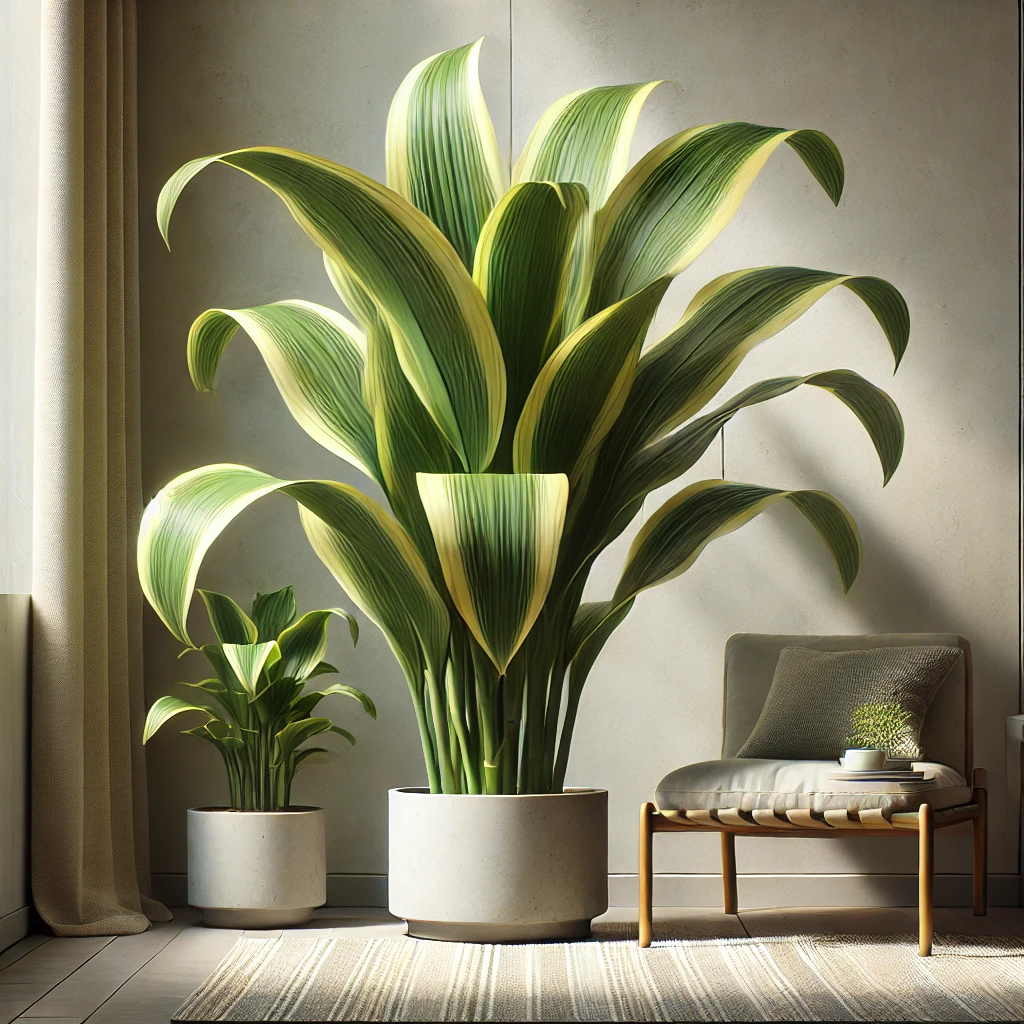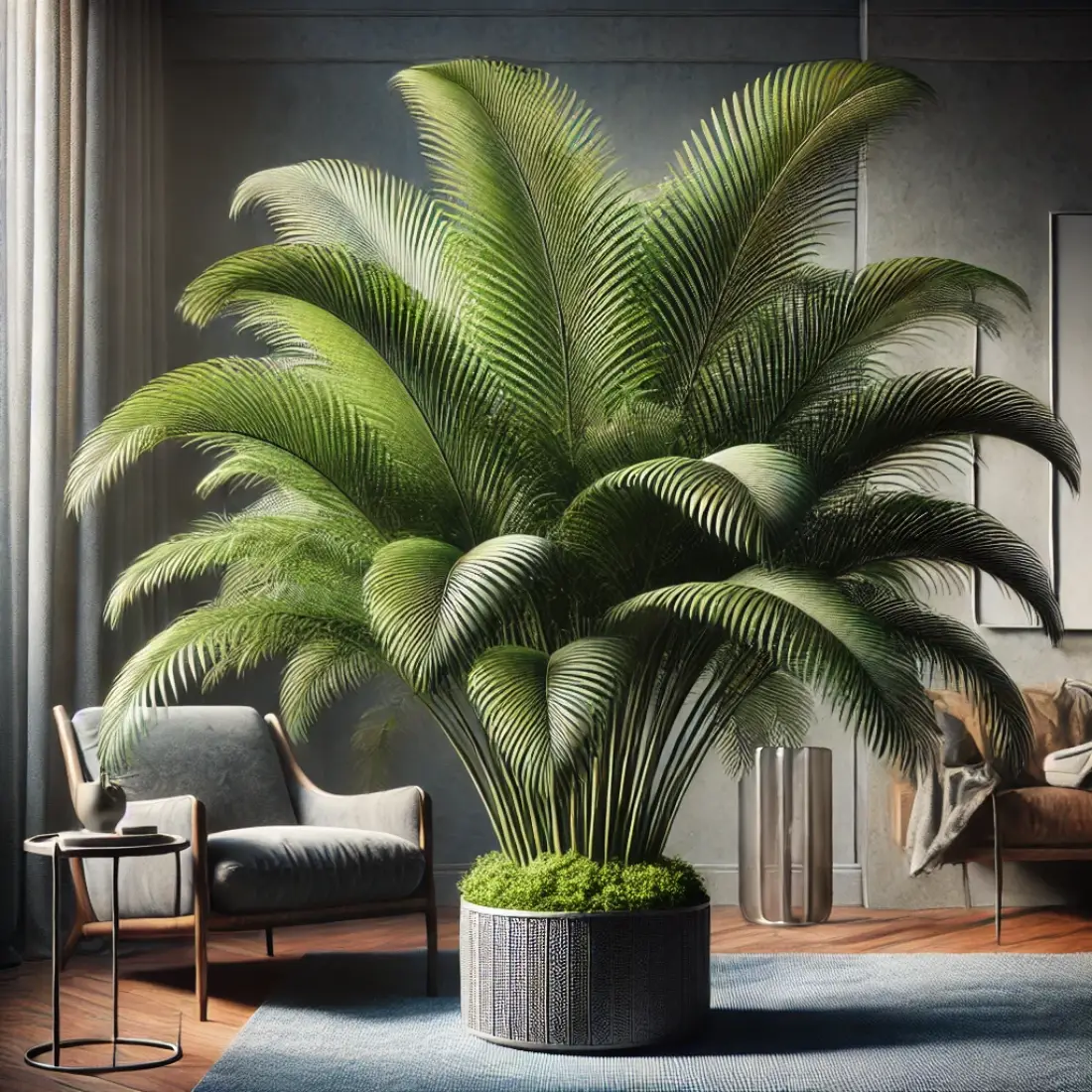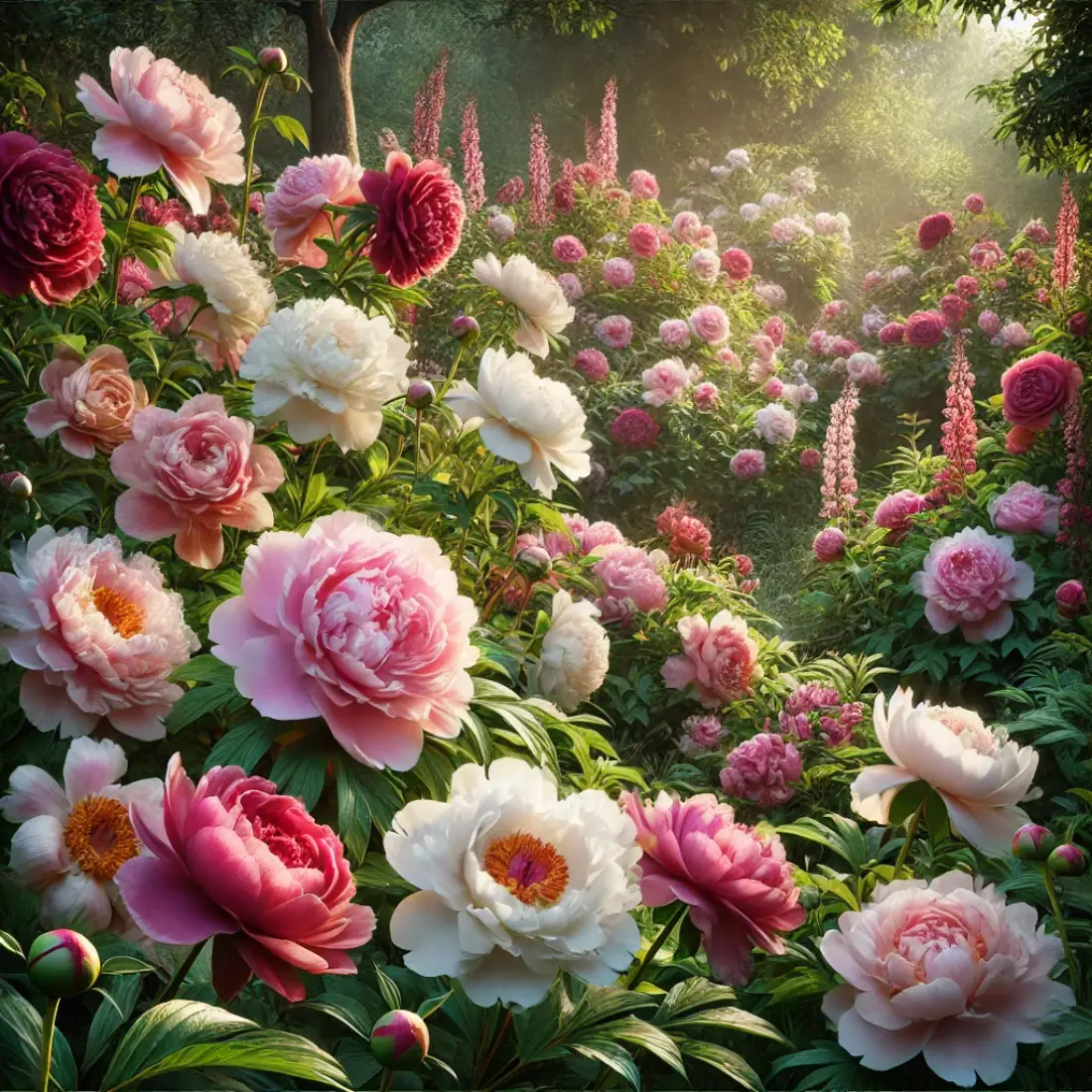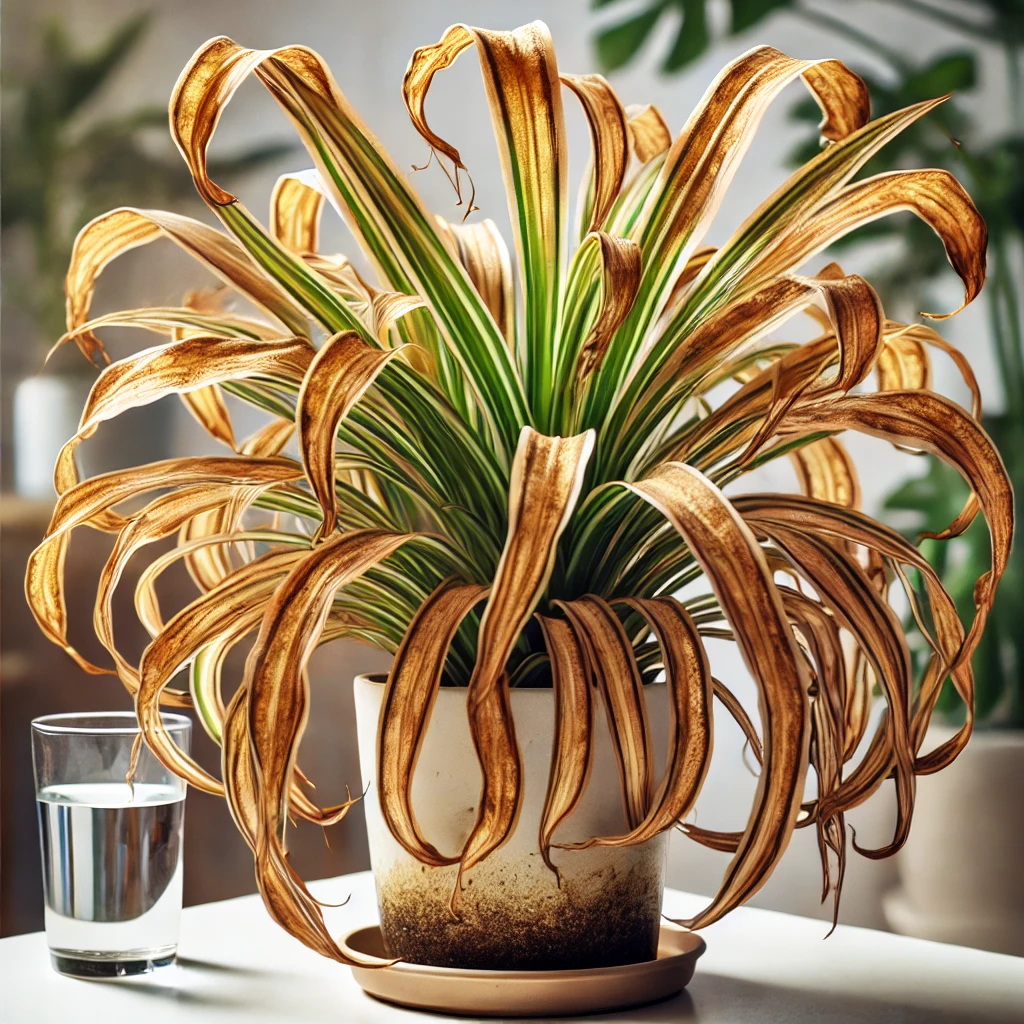Dracaena Fragrans, commonly known as the Corn Plant, is a popular indoor plant cherished for its striking appearance and low-maintenance nature. With its long, arching leaves that resemble the foliage of a corn stalk, this plant adds a touch of tropical elegance to any indoor space.
Originating from the lush forests of West Africa, Dracaena Fragrans thrives in low-light conditions, making it an excellent choice for homes and offices where natural light might be limited. Dracaena Fragrans is known for its air-purifying qualities, as it helps remove toxins like formaldehyde and benzene from the air, improving the indoor environment.
- Low Maintenance: Dracaena Fragrans is easy to care for, making it ideal for beginners.
- Tolerant of Low Light: It thrives in low to moderate light conditions, perfect for indoor spaces.
- Air-Purifying: This plant helps improve indoor air quality by filtering out toxins.
- Water Sparingly: It prefers to be on the drier side, so avoid overwatering.
- Prune for Shape: Regular pruning keeps the plant looking tidy and encourages new growth.
Optimal Growing Conditions for Corn Plant
Dracaena Fragrans (Corn Plant) thrives in low to moderate light, making it perfect for indoor settings. It prefers indirect sunlight, so place it near a window with filtered light or in a room with bright, ambient lighting. While it can tolerate lower light conditions, its growth may slow down, and the leaves might lose some vibrancy.
The ideal temperature range for Dracaena Fragrans is between 60°F and 75°F (16°C to 24°C). It doesn’t do well in cold drafts or temperatures below 50°F (10°C), so avoid placing it near doors or windows that frequently open to the outside.
This plant prefers moderate humidity levels but can adapt to lower humidity environments typical of most homes. A well-draining, peat-based potting mix is best, as it prevents waterlogging, which can lead to root rot. Regularly check the soil moisture and water only when the top inch is dry.
Watering Guidelines
Dracaena Fragrans prefers to be kept on the drier side, so it’s crucial not to overwater. Water the plant when the top inch of soil feels dry to the touch. Ensure the pot has good drainage to prevent water from accumulating at the bottom, which can lead to root rot.
During the growing season (spring and summer), water more frequently, but reduce watering in the fall and winter when the plant’s growth slows. Avoid using tap water high in fluoride, as it can cause leaf tip browning, distilled or filtered water is ideal.
Soil and Potting Requirements
Dracaena Fragrans thrives in a well-draining, peat-based potting mix that retains some moisture but doesn’t become waterlogged. A mix specifically designed for houseplants or a blend of peat, pine bark, and perlite works well. Proper drainage is essential, so choose a pot with drainage holes to prevent water from sitting at the bottom, which can cause root rot.
When repotting, select a pot that’s just slightly larger than the current one, as the Corn Plant prefers to be somewhat root-bound. Repot every two to three years to refresh the soil and accommodate growth.
Organic Fertilizers
Dracaena Fragrans benefits from the use of organic fertilizers, which provide nutrients slowly and help maintain healthy soil. A balanced, water-soluble organic fertilizer, such as compost tea, worm castings, or a seaweed-based liquid fertilizer, works well. Apply the fertilizer every four to six weeks during the growing season (spring and summer), diluting it to half the recommended strength to avoid over-fertilization.
In fall and winter, reduce feeding as the plant’s growth slows. Organic fertilizers not only nourish the plant but also improve soil structure and encourage beneficial microbial activity.
Pruning and Maintenance Tips
Regular pruning helps Dracaena Fragrans maintain its shape and encourages new growth. Trim away any yellowing or dead leaves using clean, sharp scissors. If the plant becomes too tall, you can cut the stem back to your desired height. New shoots will emerge just below the cut, making the plant bushier.
To keep your Corn Plant looking its best, wipe the leaves with a damp cloth to remove dust. This not only enhances its appearance but also improves photosynthesis. Regularly inspect the plant for pests and treat promptly if any are found.
Propagation of Dracaena Fragrans
Propagating Dracaena Fragrans is simple and can be done through several methods, with stem cuttings being the most common. Here’s how to propagate:
1. Stem Cuttings:
- Select a healthy stem with at least two nodes.
- Cut a 4-6 inch section using a sharp, sterilized knife.
- Let the cutting dry for a few hours, then plant it in a pot with well-draining soil.
- Water lightly and place in indirect light; roots should form in a few weeks.
2. Air Layering:
- Choose a healthy stem and make a small cut below a node.
- Wrap the cut area with moist sphagnum moss, then cover it with plastic wrap.
- Once roots develop (in a few weeks), cut below the new roots and plant it.
3. Division:
- If the plant has multiple stalks, you can carefully separate them during repotting, ensuring each section has roots.
- Replant each division in its own pot with fresh soil.
Propagation is best done in spring or summer when the plant is actively growing.
Common Problems and Solutions
Dracaena Fragrans is generally hardy, but it can encounter a few common issues:
Yellowing Leaves: Often a sign of overwatering. Ensure the soil is well-draining and let it dry out between waterings. Check that the pot has drainage holes.
Brown Leaf Tips: This can be caused by low humidity, fluoride in tap water, or inconsistent watering. Use distilled or filtered water and increase humidity by misting the plant or using a humidifier.
Pests: Spider mites, scale insects, and mealybugs can occasionally affect Dracaena fragrans. Regularly inspect the plant, and if pests are found, treat with insecticidal soap or neem oil.
Root Rot: Caused by waterlogged soil. Ensure proper drainage and avoid overwatering. Repotting in fresh, dry soil can save the plant if caught early.
FAQs About Growing Dracaena Fragrans (Corn Plant)
How often should I water Dracaena fragrans?
Water when the top inch of soil is dry. Overwatering can lead to root rot, so let the soil dry out between waterings.
Can Dracaena Fragrans grow in low light?
Yes, it can tolerate low light, but it thrives best in bright, indirect light. Growth may slow down in lower light conditions.
What type of soil is best for Dracaena fragrans?
Use a well-draining, peat-based potting mix. Proper drainage is crucial to prevent root rot.
Why are the leaves of my Corn Plant turning yellow?
Yellow leaves often indicate overwatering. Ensure the soil dries out between waterings and that the pot has adequate drainage.
Is Dracaena fragrans toxic to pets?
Yes, Dracaena fragrans is toxic to dogs and cats if ingested, causing vomiting, drooling, and appetite loss.
How can I propagate Dracaena fragrans?
It can be propagated through stem cuttings, air layering, or division. Stem cuttings are the most common method.
Why do the tips of my plant’s leaves turn brown?
Brown tips are often due to fluoride in tap water, low humidity, or inconsistent watering. Use distilled water and increase humidity.
How tall can Dracaena fragrans grow indoors?
Indoors, it can reach up to 6 feet tall, depending on care and environment. Pruning can control its height.
How often should I fertilize my Corn Plant?
Fertilize with a diluted, balanced organic fertilizer every four to six weeks during the growing season (spring and summer).
Can I place my Corn Plant outdoors?
Yes, but only in warm weather. It should be placed in a shaded area and brought indoors when temperatures drop below 60°F (16°C).











